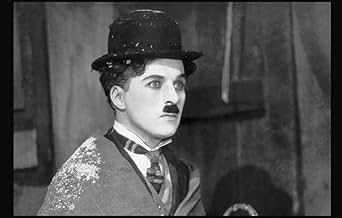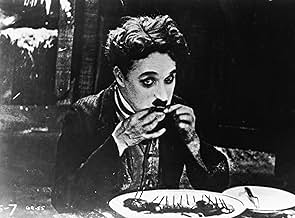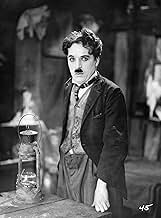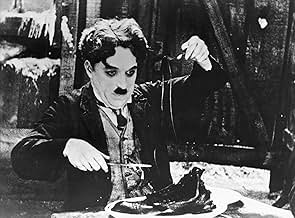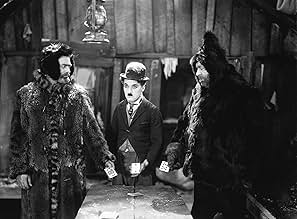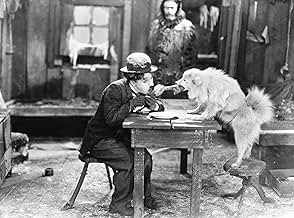ÉVALUATION IMDb
8,1/10
122 k
MA NOTE
Le célèbre assaut pour tout l'or de l'Oklahoma vu par l'un des maîtres du burlesque américain.Le célèbre assaut pour tout l'or de l'Oklahoma vu par l'un des maîtres du burlesque américain.Le célèbre assaut pour tout l'or de l'Oklahoma vu par l'un des maîtres du burlesque américain.
- Nommé pour 2 oscars
- 5 victoires et 3 nominations au total
Jack Adams
- Man in Dance Hall
- (uncredited)
Frank Aderias
- Eskimo Child
- (uncredited)
Leona Aderias
- Eskimo Child
- (uncredited)
Lillian Adrian
- Woman in Dance Hall
- (uncredited)
Sam Allen
- Man in Dance Hall
- (uncredited)
Claude Anderson
- Man in Dance Hall
- (uncredited)
Harry Arras
- Man in Dance Hall
- (uncredited)
Albert Austin
- Prospector
- (uncredited)
F.J. Beauregard
- Man in Dance Hall
- (uncredited)
Marta Belfort
- Woman in Dance Hall
- (uncredited)
William Bell
- Man in Dance Hall
- (uncredited)
Francis Bernhardt
- Man in Dance Hall
- (uncredited)
Histoire
Le saviez-vous
- AnecdotesSir Charles Chaplin stated that this was the film by which he most wanted to be remembered.
- GaffesWhen Big Jim is delirious and thinks The Lone Prospector is a chicken, The Lone Prospector removes a knife from the table and hides it in the bed. In one of the next shots, the knife is back on the table. Then in the next shot, it is gone again.
- Autres versionsThere is a 1942 re-issue version, prepared by Charles Chaplin himself, which uses his own narration, music score, and editing (running time: 72 minutes). This version is the only one which has its copyright owned by the Chaplin Film company. Many scenes of the 1942 version derived from an alternate camera that was shooting simultaneously. This explains some of the very slight differences in camera angle, although Chaplin also deleted some footage in order to tighten the pacing (such as Big Jim and the Tramp's near-encounter in the Gold Rush town and the shot of a woman comforting another woman during the singing of "Auld Lang Syne".
- ConnexionsEdited into Werner Herzog Eats His Shoe (1980)
Commentaire en vedette
I've seen both version of this film--the original silent version from 1925 and the re-release by Chaplin in the 1940s. The difference is that the re-release was designed to appeal to a new audience that expected sound from their movies. To do this, title cards were removed--having Chaplin narrate the film. In addition, Chaplin-created music (for the most part--some were classical pieces), sound effects and singing were added to make the movie more palatable to the average viewer. I personally like BOTH versions and the one you watch is up to you if you get a copy of the Warner Brothers release on DVD--it has both plus excellent DVD extras. Otherwise, there have been a lot of public domain versions on video out there--many with terrible quality prints or music or both. The Warner version is the most pristine and beautiful silent print you can find. The version usually shown on Turner Classic movies is the 1942 re-release.
I use this film for my American history class when we do our unit on the history of film, though I might, in the future, use it for my Psychology classes as well (I teach both) because Chaplin's genius came from his obsessive-compulsive nature. The movie reportedly had 27 times more film exposed than you actually see in the film and the shoe eating segment was shot after more than 60 takes!!
The plot involves Charlie going to Alaska for the Gold Rush at the turn of the century. Along the way, he has a series of misadventures that have been thoroughly discussed in the other reviews here on IMDb. Suffice to say, the supporting acting was excellent and the story kept an excellent pace and had enough slapstick to make it fun to watch (something not true of all full-length slapstick comedies--sometimes, their pacing was negatively affected by the transition from shorts to full-length).
This is a gorgeous, well-executed piece of American art and a must for any real cinemaniac. The musical score (arranged by Chaplin), direction, acting and cinematography all are simply perfect--making this, in my opinion, the best full-length silent comedy ever made. This is saying a lot considering how much I love Harold Lloyd and Buster Keaton's films!
I use this film for my American history class when we do our unit on the history of film, though I might, in the future, use it for my Psychology classes as well (I teach both) because Chaplin's genius came from his obsessive-compulsive nature. The movie reportedly had 27 times more film exposed than you actually see in the film and the shoe eating segment was shot after more than 60 takes!!
The plot involves Charlie going to Alaska for the Gold Rush at the turn of the century. Along the way, he has a series of misadventures that have been thoroughly discussed in the other reviews here on IMDb. Suffice to say, the supporting acting was excellent and the story kept an excellent pace and had enough slapstick to make it fun to watch (something not true of all full-length slapstick comedies--sometimes, their pacing was negatively affected by the transition from shorts to full-length).
This is a gorgeous, well-executed piece of American art and a must for any real cinemaniac. The musical score (arranged by Chaplin), direction, acting and cinematography all are simply perfect--making this, in my opinion, the best full-length silent comedy ever made. This is saying a lot considering how much I love Harold Lloyd and Buster Keaton's films!
- planktonrules
- 27 avr. 2006
- Lien permanent
Meilleurs choix
Connectez-vous pour évaluer et surveiller les recommandations personnalisées
- How long is The Gold Rush?Propulsé par Alexa
Détails
- Date de sortie
- Pays d’origine
- Sites officiels
- Langues
- Aussi connu sous le nom de
- The Gold Rush
- Lieux de tournage
- société de production
- Consultez plus de crédits d'entreprise sur IMDbPro
Box-office
- Budget
- 923 000 $ US (estimation)
- Brut – à l'échelle mondiale
- 31 490 $ US
- Durée1 heure 35 minutes
- Couleur
- Mixage
- Silent(original release)
- Rapport de forme
- 1.33 : 1
Contribuer à cette page
Suggérer une modification ou ajouter du contenu manquant

Lacune principale
By what name was La ruée vers l'or (1925) officially released in India in English?
Répondre

